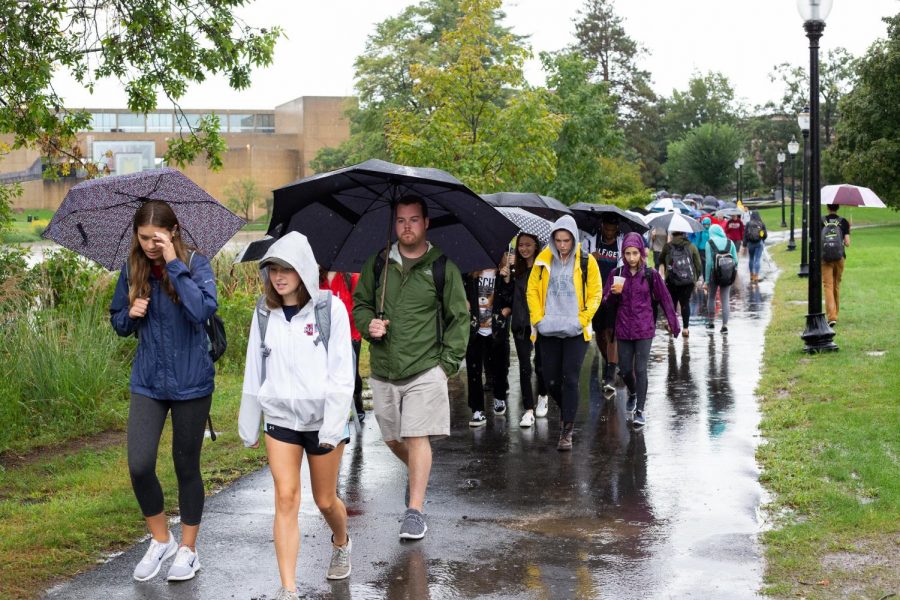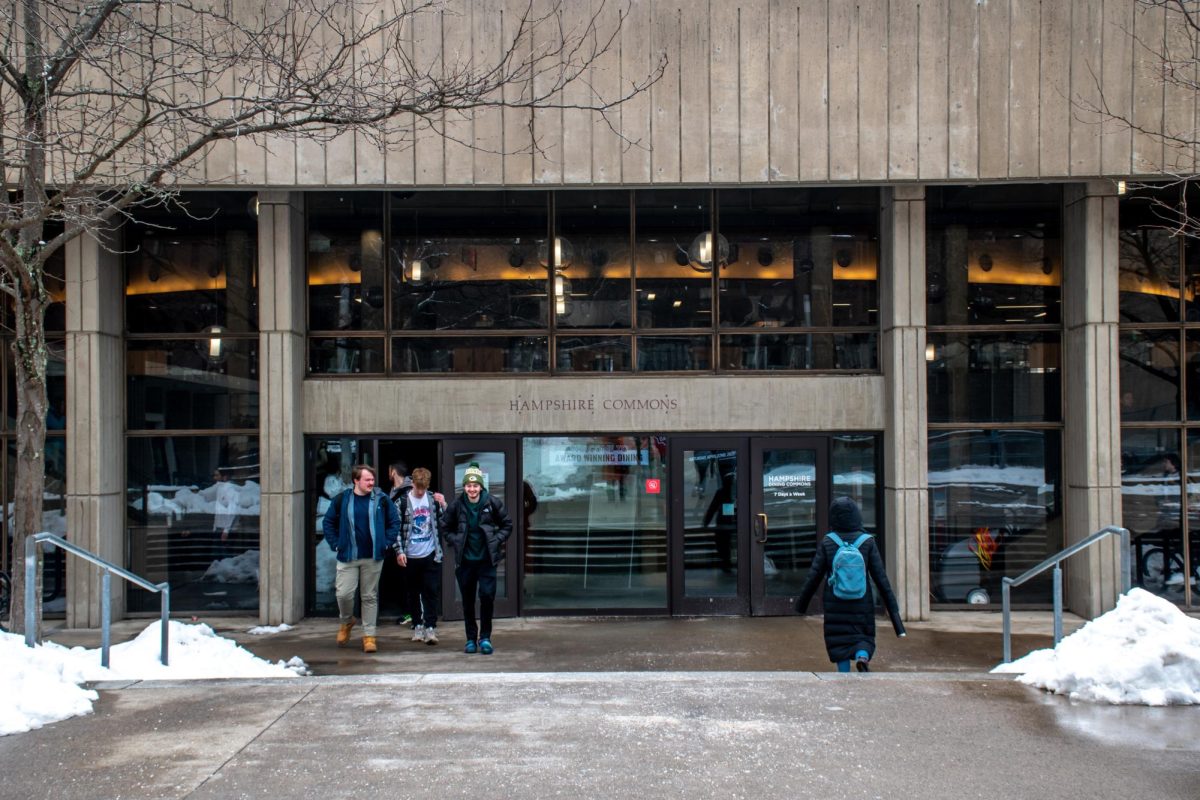With extreme weather events on the rise worldwide due to climate change, the University of Massachusetts is planning for future risks.
At UMass, the Office of Emergency Management in the department of Environmental Health and Safety has taken the lead on organizing resources in case of any kind of emergency since 2008, whether they be human-caused or environmental. With duties ranging from the operation of the Emergency Alert System to planning responses to future events, OEM has two full-time employees and multiple student employees who work with departments across campus.
Jeffrey Hescock, OEM and EHS executive director, explained that planning for emergencies on the UMass campus covers a wide range of issues, from having a response team at major events like commencement to managing winter weather.
“We prepare, respond, mitigate for emergencies,” Hescock said, knocking on a wooden table as he listed possible emergencies like a building fire, a tornado or a drought.
When OEM was first established in 2008, it was part of a nationwide response by colleges and universities to plan for the worst, following the 2007 Virginia Tech shootings. Since then, Hescock said the issues covered by the office have expanded to look at “emerging threats that are out there.”
In recent years, the office’s most high-profile cases include the 2018 meningitis outbreak, which required the cooperation with state authorities, University Health Services and the College of Nursing, and a New England-wide drought in 2016.
Reflecting on the 2016 drought, Hescock emphasized the importance of communicating not just with campus departments, but local organizations as well.
“We use about 50 percent of the town of Amherst’s water, so we make a significant impact if we reduce our water,” Hescock said, adding that OEM met with town representatives and representatives from Hampshire College and Amherst College weekly during the drought.
In those meetings, officials determined steps that could be taken to decrease water usage as necessary, but Hescock said the situation was not as drastic as a 1980 drought which closed the UMass campus for several days.
“Obviously, way different time frame then,” he said.
Having knowledge of past droughts on campus plays a major role in the way the office develops its plans. Hescock said increased use of reclaimed water and prioritizing certain research projects has shaped conversations OEM has with different departments on campus.
“You can’t prevent everything from happening, but you can help mitigate or lessen the impact when it happens.”
Prior planning on extreme weather events focused on flooding, deemed as the “most obvious natural hazard vulnerability facing the campus” in the 2015 Hazard Mitigation Report, and attributed part of the risk to climate change and the “increased frequency of severe weather events.”
In addressing climate change, UMass Chancellor Kumble Subbaswamy formed two new task forces to “advance sustainability on campus” in November 2018: a Carbon Mitigation Task Force and a Climate Resilience Task Force.
Along with landscape architecture and regional planning professor Elisabeth Hamin, Hescock joined the Climate Resilience Task Force as a co-chair. The task force, which has about 15 members, met for the first time last month to create a scope before recruiting vendors.
The outcome of the task force will be a vulnerability assessment to determine the impacts of climate change on critical infrastructure on campus, according to Subbaswamy. The task force plans to start holding public engagement events on campus in fall 2019.
“It’s a campus community type of initiative,” Hescock said.
Climate change projections for the plan will come from the Northeast Climate Science Center, which is located on the UMass campus and was factored into statewide emergency plans composed last year, according to Hescock. In case of an extreme weather event, the University could potentially serve as a base for shelter, resources and other forms of assistance for the greater Pioneer Valley.
Before the start of the task force, OEM took steps to get the UMass campus StormReady certified. According to the National Weather Service, in order to be certified, a community must establish a 24-hour warning point and emergency operations center, have more than one way to receive severe weather warnings and forecasts and alert the public, promote public readiness and develop a formal hazardous weather plan.
In Massachusetts, a total of six schools and colleges are certified as StormReady, including five colleges or universities and Milton Academy, an independent preparatory school. Significantly, UMass is the only public institution and only institution located outside of the Boston metropolitan area. The other universities include Boston College, Boston University, Harvard University and Tufts University.
When asked what it’s like to create plans that he hopes will never be used, Hescock said that he’s a “what if” kind of person.
“From a due diligence stand point, I’m comfortable knowing every day that we’re giving our all,” Hescock said. “God forbid, if the worst of the worst ever happened here, we’d be prepared. That’s what our role is.”
Kathrine Esten can be reached at [email protected] and followed on Twitter @KathrineEsten.




















